Country-house treasures: A papal seal of approval at Combermere Abbey
Country houses up and down the land are renowned for their great treasures. Here we take a look at some less-well known items in their collection that hold a deeper meaning to their owners.
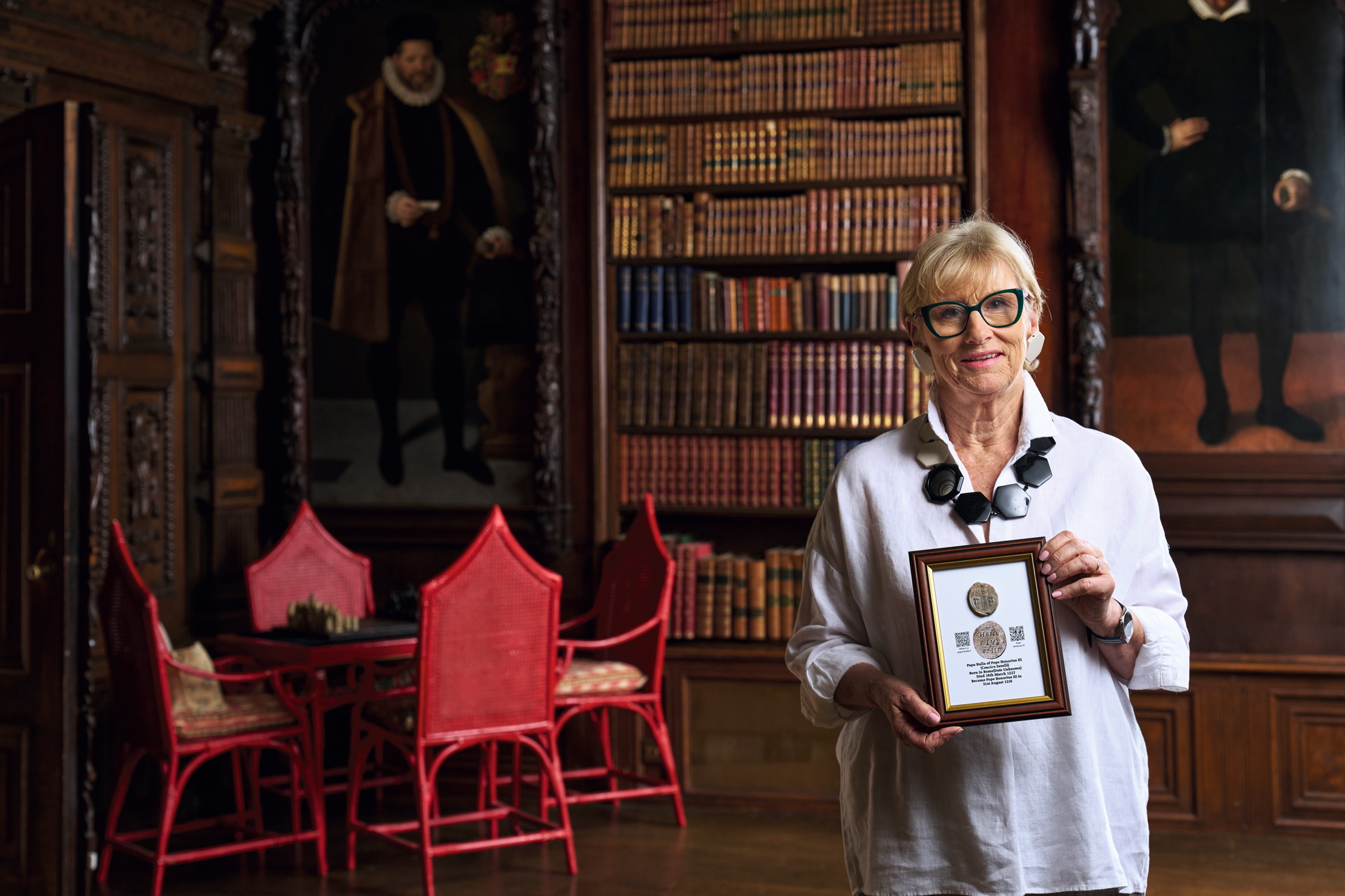

Country houses are famously more than the sum of their individual parts. The greatest not only unite landscape, architecture and art to symphonic effect — each element setting off the others to advantage — but reveal in countless ways the changing personalities, circumstances and fashions that have shaped them. Each house has its own story to tell and every story rightly told has details to fascinate and amaze.
Therefore, although it remains important to cherish these buildings as physical manifestations of history, as well as for the quality of their architecture and contents, it is also possible to enjoy them for the insights they offer into the personal experience of those who have lived, loved and worked in them through time. It is to explore this theme of the human interest of such homes that Country Life launches a new series this week titled Country-house treasures.
We have asked the present owners and custodians of houses great and small, ancient and modern, to choose an object from their home for which they have a particular affection and to explain the significance it has to them and the history of the building. These individuals necessarily have an unrivalled understanding of the buildings and collections they care for, so are both well placed to choose and to explain their choice. Added to which, they are presently making their own contribution to what will become the story of their homes.
'In the bonds that link the three together is the very essence of what keeps the British country house — in the face of so many challenges — loved, living and vigorous in the 21st century'
In making their selection, the only guiding principle has been to steer away from things of intrinsic value, such as Old Master paintings or fine pieces of furniture. Such objects tend to advocate themselves to a wide audience and command respect because of their perceived value. Rather, we have asked the owners to think of something that has an engaging story attached. These are the things — we suggested — that are pointed out to enliven a tour or which naturally catch the attention of visitors as curiosities. Alternatively, they might be commonplace objects that it would be easy to look straight through, but which benefit from having their presence and significance explained.
The choice has not necessarily been easy, but the results are invariably fascinating, varied and unexpected. In each case, the person who has made it has been photographed with the object in the house, sometimes in company with their spouse. We are grateful for their enthusiasm and time contributing to this series. The result on the page is a short explanatory text with a happy trinity of commanding images: caretaker, curiosity and house. In the bonds that link the three together is the very essence of what keeps the British country house — in the face of so many challenges — loved, living and vigorous in the 21st century.
By order of Pope Honorius III
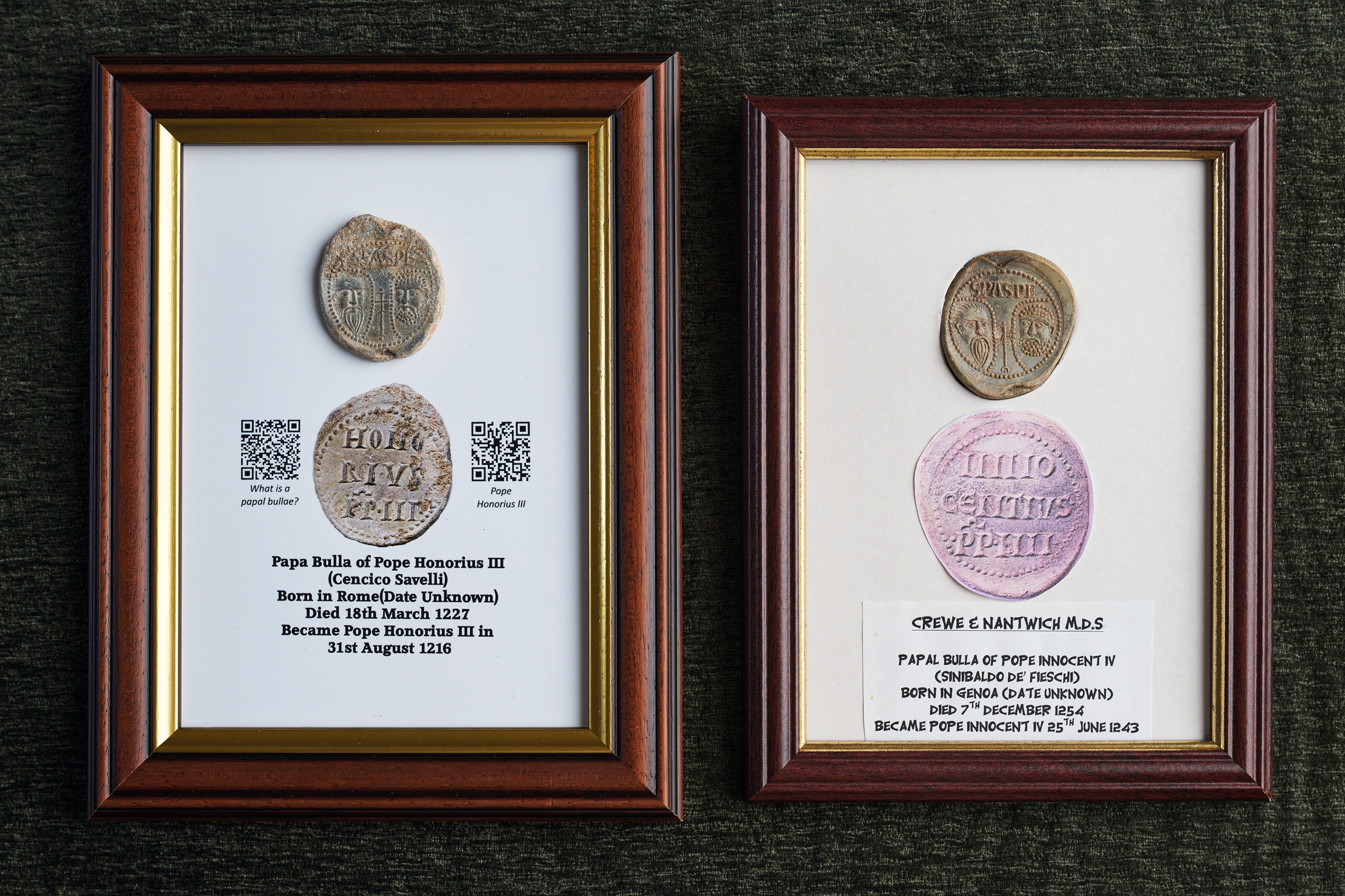
Sarah Callander Beckett holds a framed papal seal or bulla issued by Pope Honorius III (reigned 1216–27), discovered at Combermere this year by a local metal-detector group. Such seals — which continue in use — have bestowed the name of ‘papal bulls’ on the documents they authenticate. By long tradition, bullas are made of lead and decorated with Saints Paul and Peter on one side (identified by the inscription SPASPE) and the name of the issuing pope on the other.
The discovery is a reminder of the medieval origins of Combermere as an abbey of the Sauvignac — and later Cistercian — order that was dissolved in 1538. It is not known to what lost document this bulla was attached.
The Roman-born Honorius III was a towering figure in European affairs, driving forward the reforms of the Fourth Lateran Council of 1215. Through his legate, Guala Bicchieri, he also played a crucial role in the English civil war that followed King John’s rejection of Magna Carta. Papal support secured the succession of John’s nine-year-old son, Henry III, to the throne in 1216. Another bulla, issued by Innocent IV (reigned 1243–54) was also discovered at Combermere in the 1990s.
Indian Summer
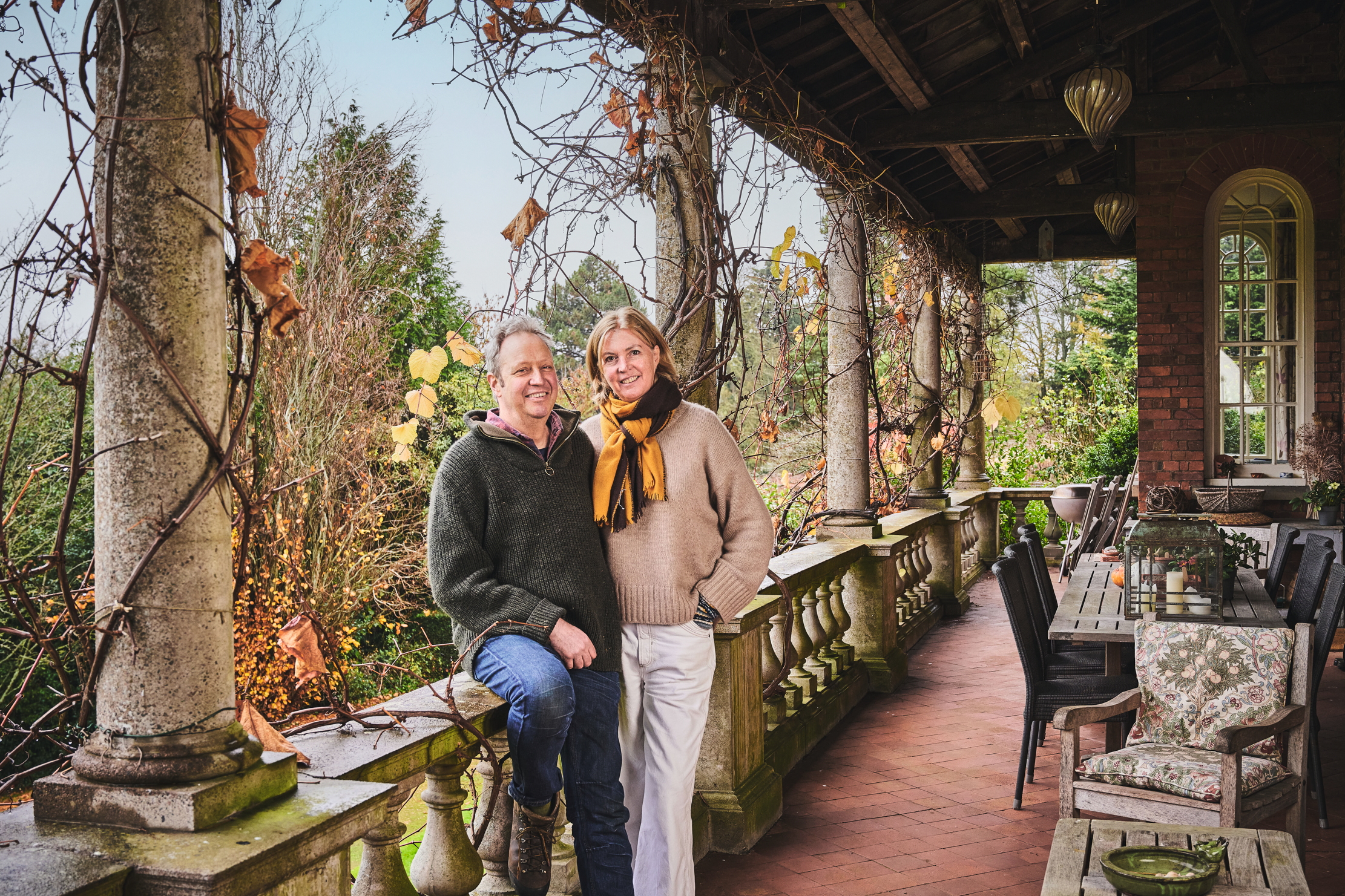
Richard and Susanna Bott stand on the verandah that overlooks their much-loved gardens and lake at Benington Lordship. This was one of the pioneering properties involved in the first opening of the National Garden Scheme in 1927. ‘The verandah is a favourite feature of the house,’ explains Richard, ‘popular with the whole family, including the animals. It is very much part of the history and varied character of our home and is particularly enjoyable on a sun-drenched day in high summer.’
The verandah was built in 1906 as part of the Edwardian enlargement and reorganisation of the house overseen by the architect Edward Arden Minty of London and Petersfield, Hampshire, for a former Indian railway engineer, Arthur F. Bott. Its Tuscan columns and the arrangement of rooms opening onto it — originally a drawing room, billiard room and smoking room — are reminiscent of a colonial bungalow.
Bott purchased Benington Lordship with his wife, Lilian, on retirement in 1905. At that time, it comprised a brick house of about 1700 erected over the foundations of a medieval castle. These remains inspired one owner in the 1830s to create the memorable neo-Norman gateway entrance to the house.
Past participants: The centuries-old documents at Broughton Hall
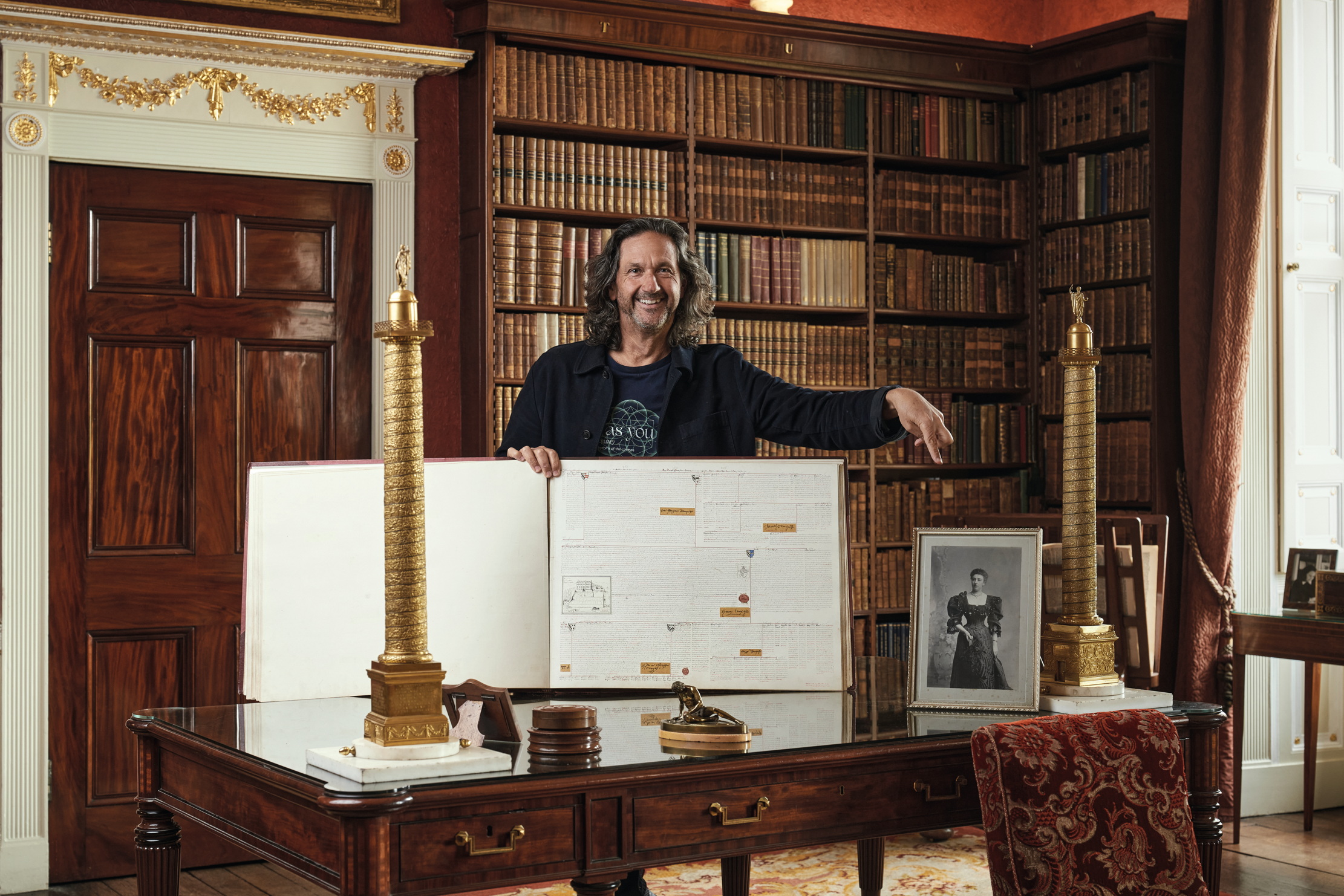
A close-up of the vellum document at Broughton Hall, owned by Roger Tempest
Roger Tempest holds open a densely written genealogy that traces the history of his family, owners of Broughton since the Middle Ages, back through 32 generations to 1097. ‘The continuity is astonishing and improbable,’ he muses. ‘How have we survived?’
This remarkable volume was compiled in 1889 by his great-grandmother Eleanor Blanche Tempest, whose silver-framed photograph stands on the desk. The text is written in a small, but immaculate hand on vellum with names picked out and is variously illustrated with hand-drawn illustrations, including coats of arms, seals and facsimiles of signatures. Another copy of the manuscript was presented to the British Library, where it remains.
‘This document is a window into the past,’ he continues. ‘It reveals what my ancestors lived through and how adaptable and forward thinking they were. It’s a reminder, too, I suppose, that actions are the measures of every individual. I like to think that there is a lot of courage, duty and integrity to be found here, as well as good custodianship of the land and its community.’
A life remembered: The Cobbold family's picture of portrait of Emily Bulwer Lytton
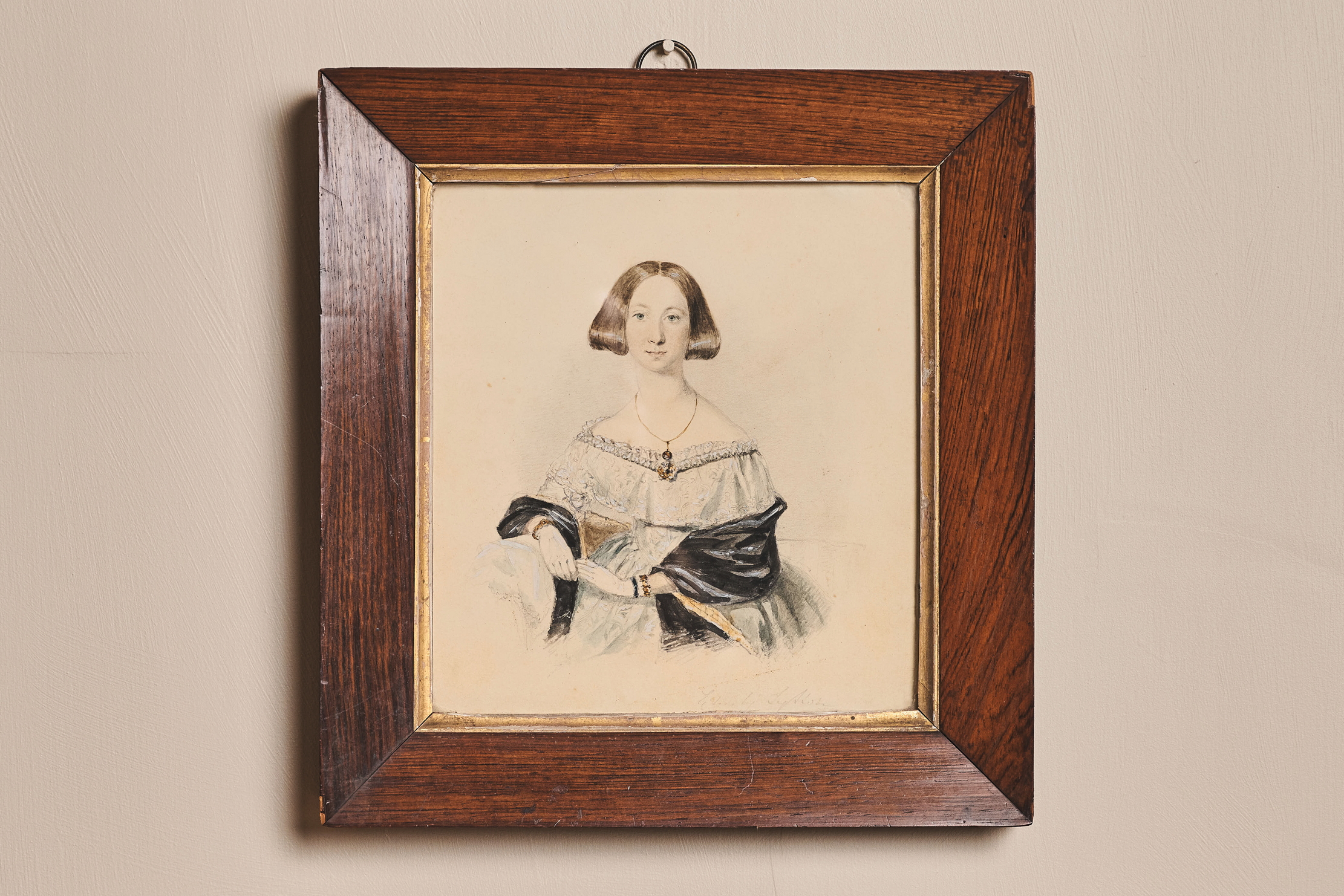
The framed portrait of Emily Bulwer Lytton, owned by Henry Lytton Cobbold.
Henry Lytton Cobbold, 3rd Baron Cobbold, holds a portrait of Emily Bulwer Lytton (1828–48). A concealed inscription declares in French: ‘When I am gone, think of me!’ Emily was the daughter of the celebrity Victorian novelist Edward Bulwer Lytton and the forceful beauty Rosina, née Wheeler.
After their acrimonious separation in 1836, Rosina tried to exact vengeance on her husband for his infidelities by writing novels based on her experiences. By the terms of their settlement, she was denied access to her children.
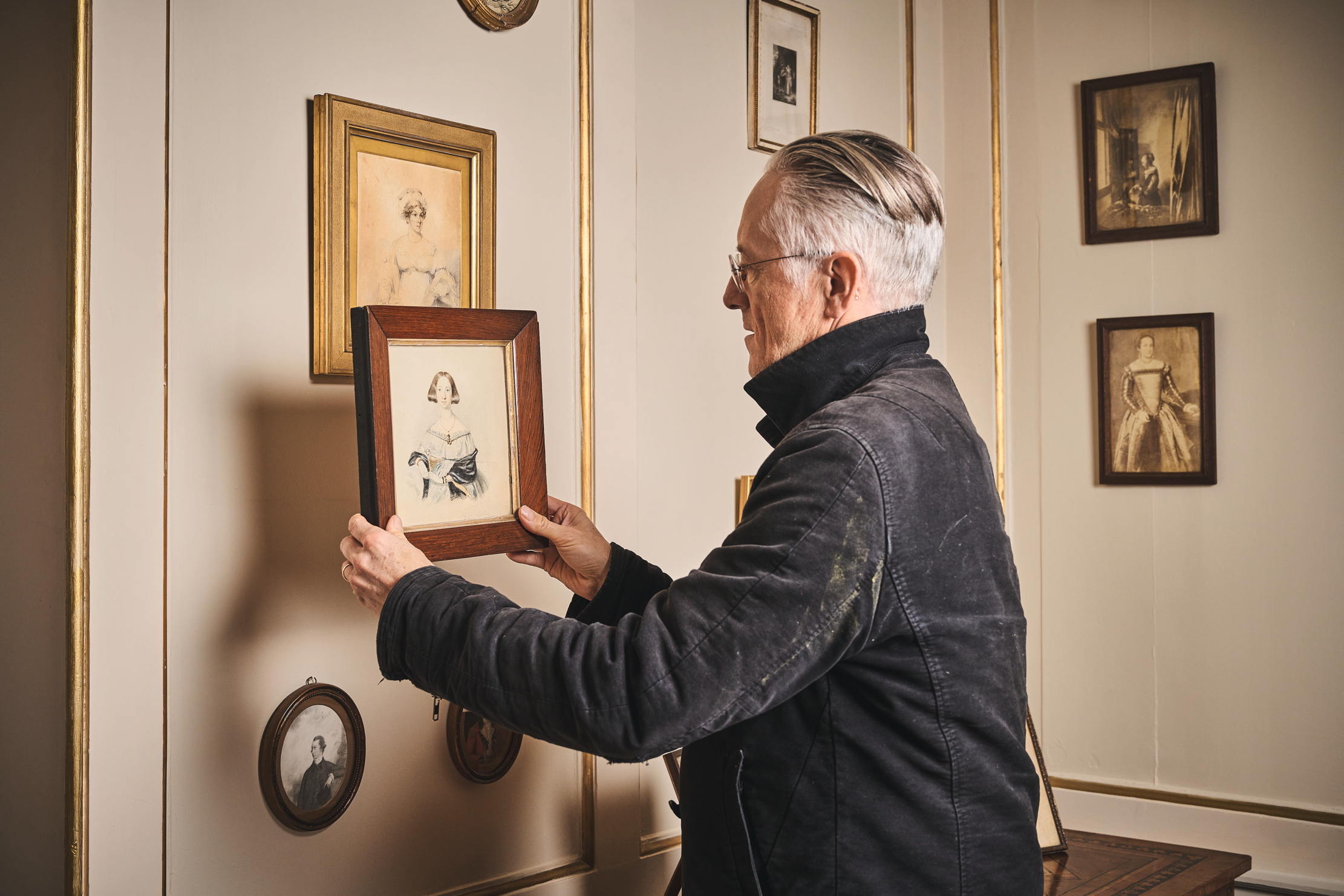
Henry Lytton Cobbold holds the framed portrait of Emily Bulwer Lytton. Almost forgotten, her inscription to 'remember me when I am not there' clearly resonates with the 3rd Baron Cobbold.
Emily suffered from curvature of the spine and died aged 19, alone in a boarding house in London. The discovery of her coffin in the family mausoleum — prised opened by thieves — and a box of her letters at Knebworth prompted Lord Cobbold to research and write up her tragic life in a two-volume biography.
It was asserted that she died of typhus, but she may have taken her own life, overdosing with laudanum she had been prescribed for toothache. The message on the portrait seems to have been aimed at her grandmother, in whose former bedroom it hangs.
A musical façade: The organ at Glyndebourne House
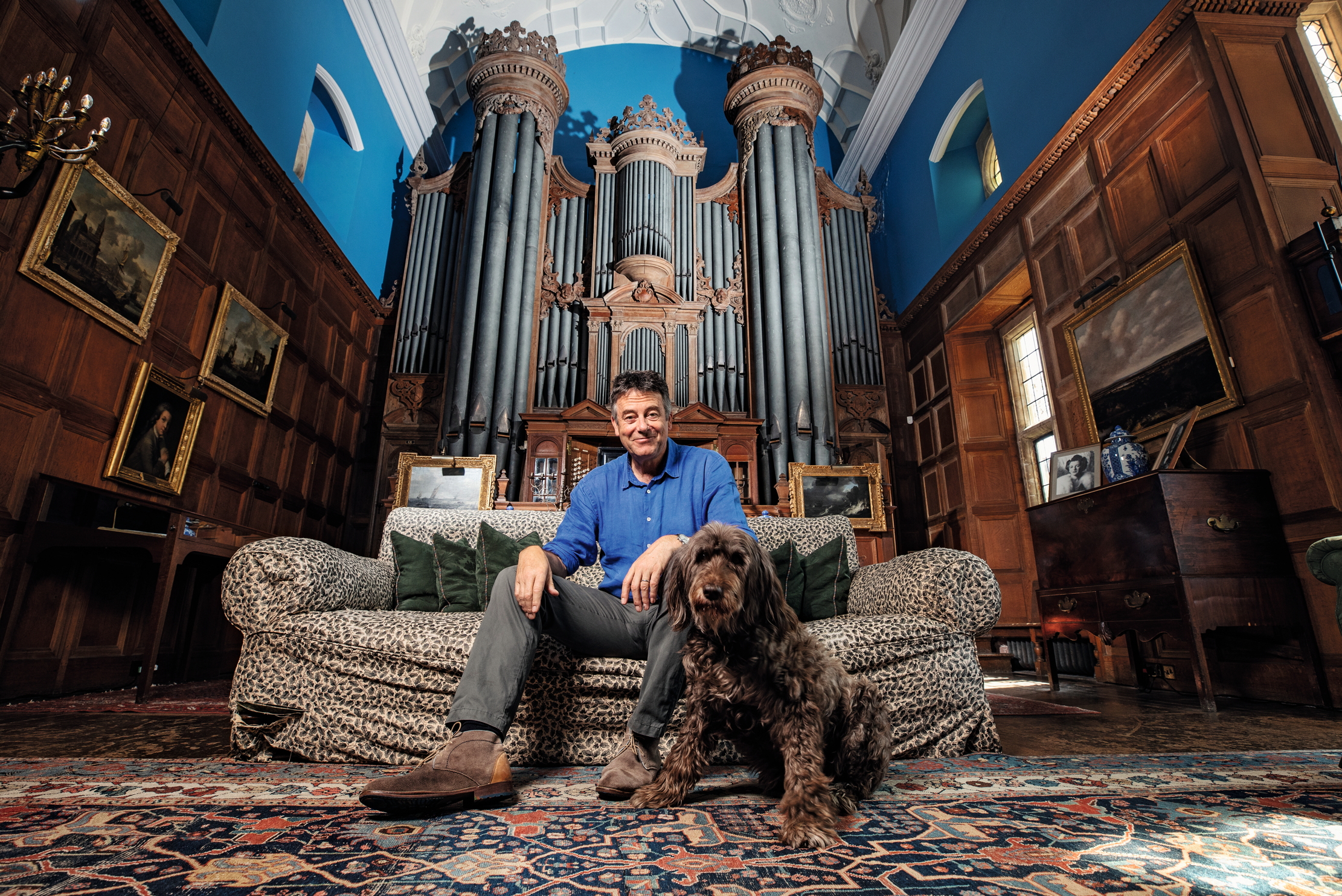
Gus Christie sits in front of the organ in the hall that physically links the house and opera at Glyndebourne. This instrument — and the purpose-built Tudor-style room that contains it — were built after the First World War by the founder of the opera, John Christie, for his composer and friend Dr Charles Harford Lloyd, the Precentor of Eton, as an inducement to retire in East Sussex. Sadly, however, Harford Lloyd died in October 1919, before the organ was completed.
The instrument was so powerful that, when it was first played, pieces of plaster fell from the ceiling. Christie went on to buy the Norfolk-based company that built it, Hill, Norman & Beard. Alterations to the neighbouring opera house in the 1950s have left the instrument as a silent monument to his enthusiasm for music.
‘Operagoers love passing through this room and all our performances are relayed here,’ Mr Christie explains. ‘This instrument is like a musical façade that introduces both the history of the house and its musical life. If we can raise the funds, I hope that one day it will play again.’
Signatures from the past — Stedcombe House, Devon
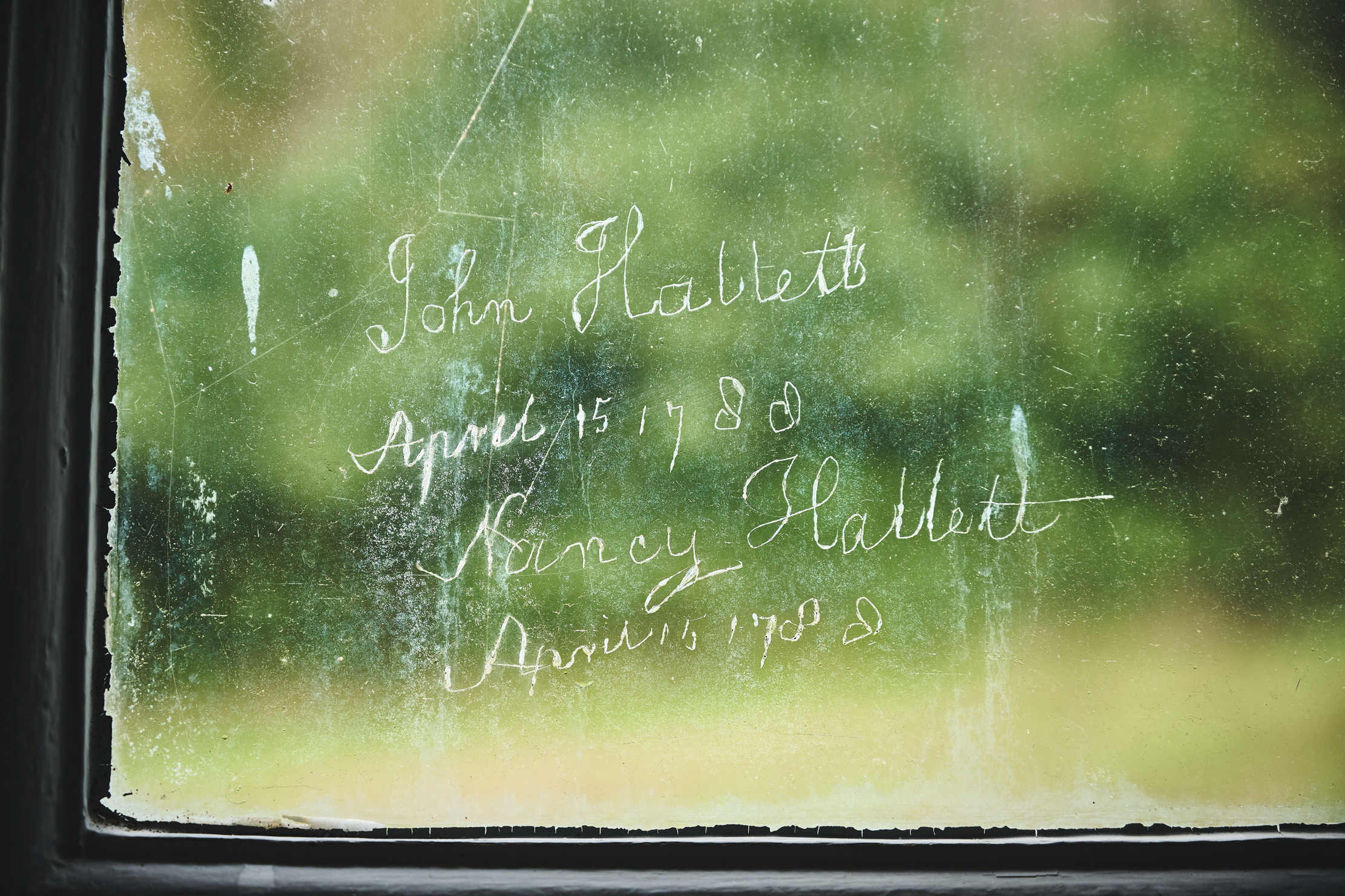
Graffiti incised in the window panes of this fine 1690s house, which Paul Zisman has been restoring with his wife, Sybella. The graffiti includes the repeated signature of John Hothersall Hallett and the date April 15, 1788.
At the time he scratched his name, John would have been 12 years old. He had eight siblings, one of whom was Nancy Hallett, who also signed her name.
Hallett inherited Stedcombe in 1814, by which time he had already built his long-term home nearby, called Haven-cliff. This was a Gothic villa overlooking the mouth of the River Axe, which he attempted to develop, cutting a channel through the beach to make — in the words of a local press report — a ‘commodious harbour… capable of admitting vessels of 150 tons burden’. He secured an Act of Parliament in 1830 ‘for maintaining and governing the harbour of Axmouth’. It lists the duty to be paid on such commodities as coal, eggs, nails, gunpowder and cattle, associated with Hallett’s diverse business ventures.
The harbour was hit hard by the arrival of the railway in the 1860s and the family’s fortunes declined with it. The estate was auctioned by order of the Chancery Division in 1890.

John spent his childhood in Kenya, Germany, India and Yorkshire before joining Country Life in 2007, via the University of Durham. Known for his irrepressible love of castles and the Frozen soundtrack, and a laugh that lights up the lives of those around him, John also moonlights as a walking encyclopedia and is the author of several books.
-
 Suit yourself: I’m a 49 year-old man-about-town and I’ve never owned a suit
Suit yourself: I’m a 49 year-old man-about-town and I’ve never owned a suitWhen Hugh Smithson-Wright turned up to Country Life's annual Gentleman's Life party sans suit, it sparked a passionate conversation about why the formal fashion just isn't for everyone.
-
 'The ugliness and craziness is a part of its charm': The Country Life guide to Bangkok
'The ugliness and craziness is a part of its charm': The Country Life guide to BangkokWhere to stay, where to eat and what to do in the Thai capital.
-
 Sweet civilisation: What do you get when you ask architects to compete in a gingerbread competition?
Sweet civilisation: What do you get when you ask architects to compete in a gingerbread competition?The Gingerbread City is back in London’s Kings Cross. Lotte Brundle pays it a visit.
-
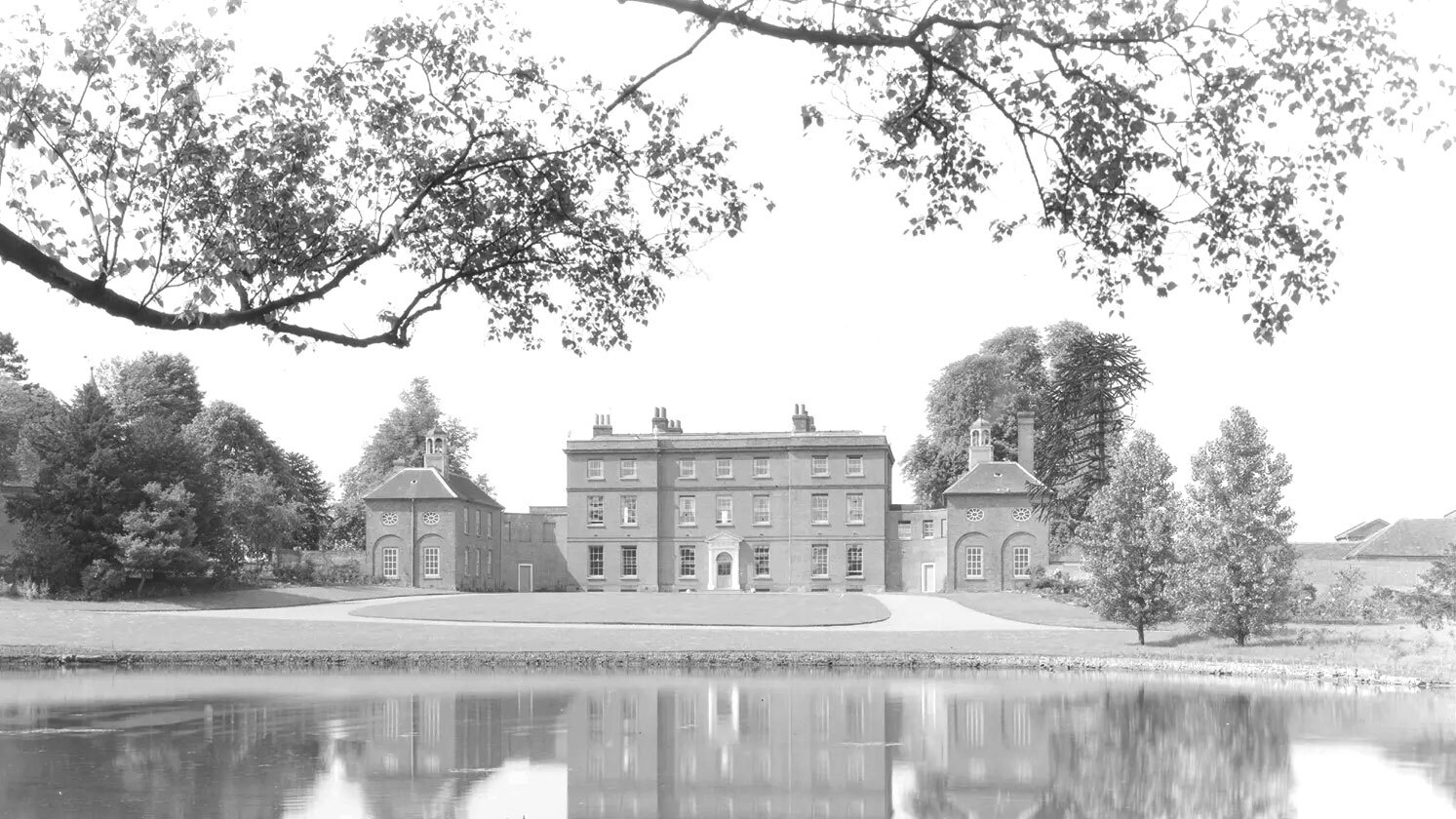 This Grade I Essex home was renovated by a Guinness and a notorious American diarist and photographed by Country Life — now it's a firm favourite with the fashion set
This Grade I Essex home was renovated by a Guinness and a notorious American diarist and photographed by Country Life — now it's a firm favourite with the fashion setKelvedon Hall was saved from demolition by Lady Honor Guinness and Henry 'Chips' Channon. Now it is the star of a Church's Christmas campaign.
-
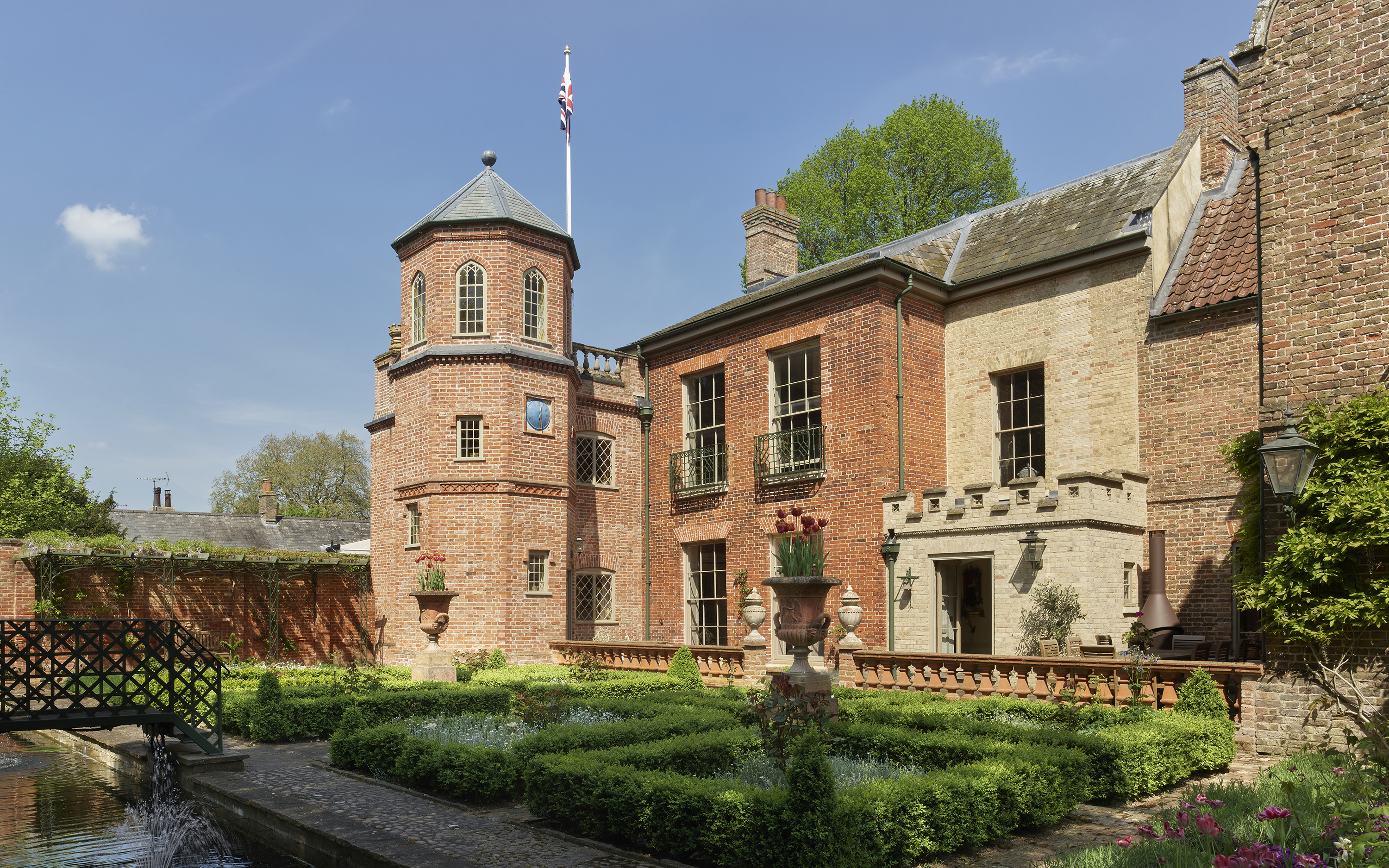 Northwold Manor: 'A place of delight once more after half a century of chaos and neglect'
Northwold Manor: 'A place of delight once more after half a century of chaos and neglect'A heroic restoration project has transformed Northwold Manor in Norfolk — home of Professor Warwick Rodwell and Ms Diane Gibbs — after more than 50 years of being left neglected. It has also illuminated its remarkable history, as John Goodall explains; photography by Paul Highnam for Country Life.
-
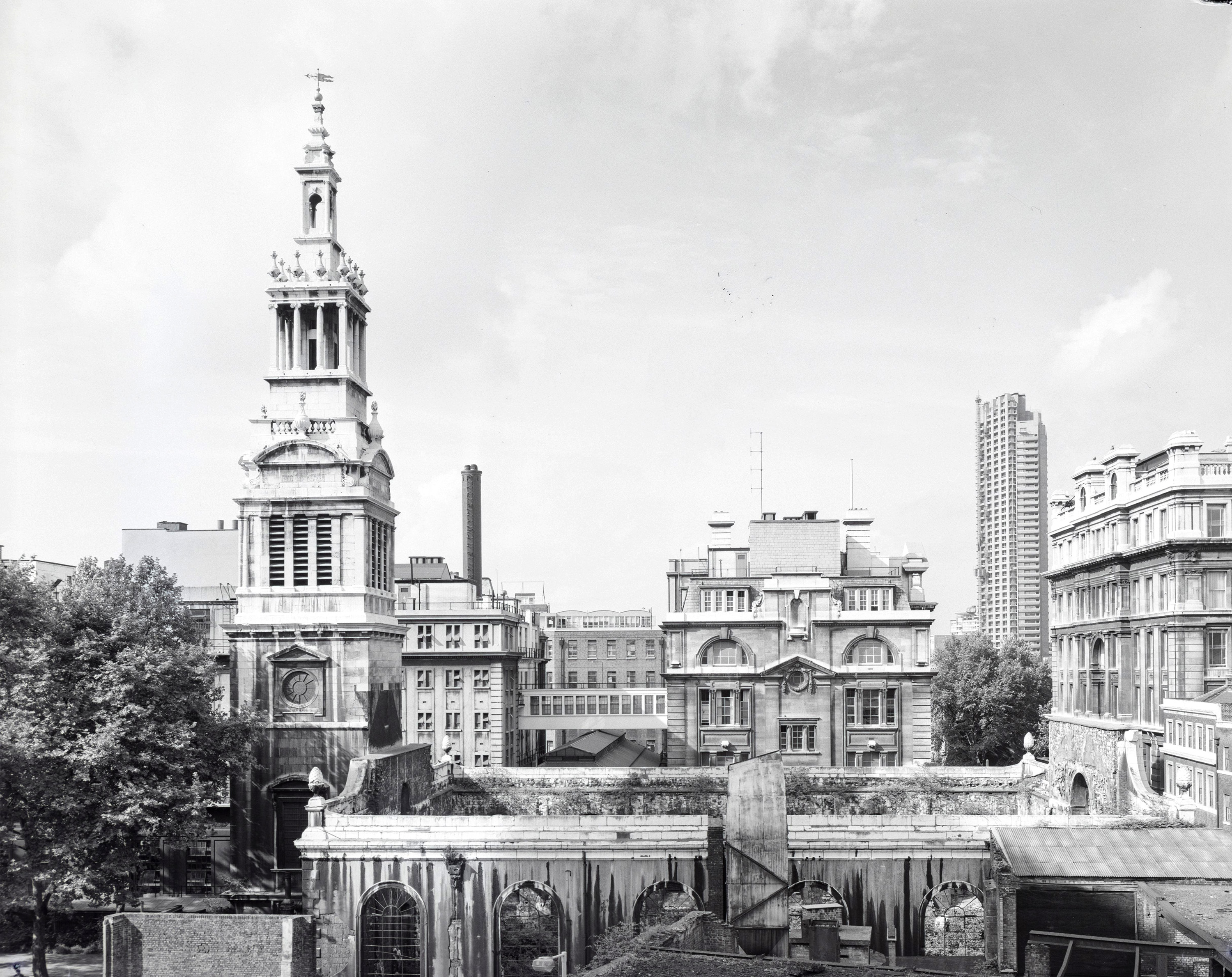 53 years ago, a Wren masterpiece was replaced with a glorified roundabout. We must not make the same mistake again
53 years ago, a Wren masterpiece was replaced with a glorified roundabout. We must not make the same mistake againThe plans to rid Christ Church Newgate Street of traffic should be cause for celebration — but a mistake as bad as the one made in the 1970s is about to happen, says Ptolemy Dean.
-
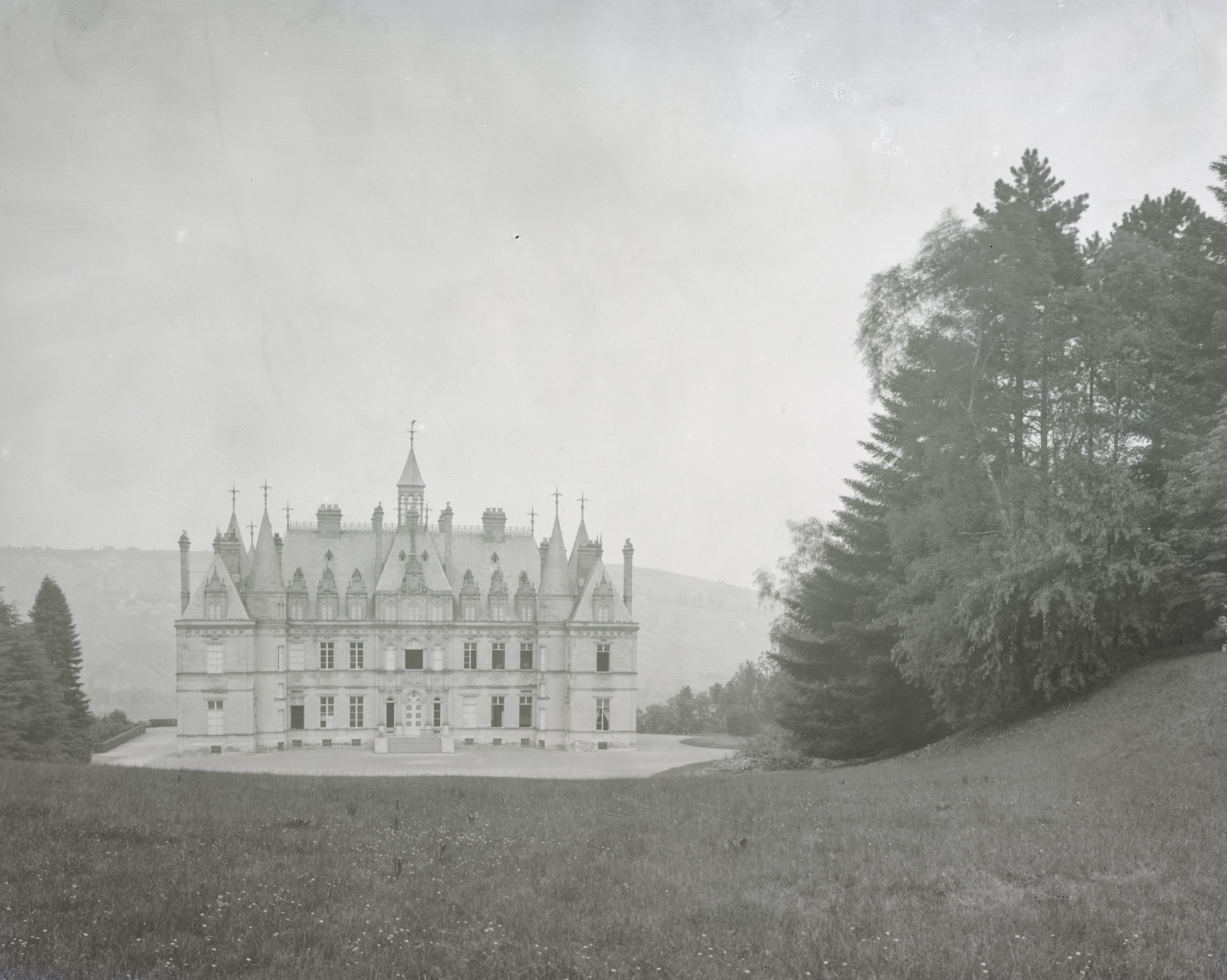 Ten of the most exquisite French châteaux, photographed for Country Life in 1906 and still standing today
Ten of the most exquisite French châteaux, photographed for Country Life in 1906 and still standing todayIn the early 20th century, Country Life commissioned Frederick H. Evans to photograph some of France's châteaux. Here are some of his efforts.
-
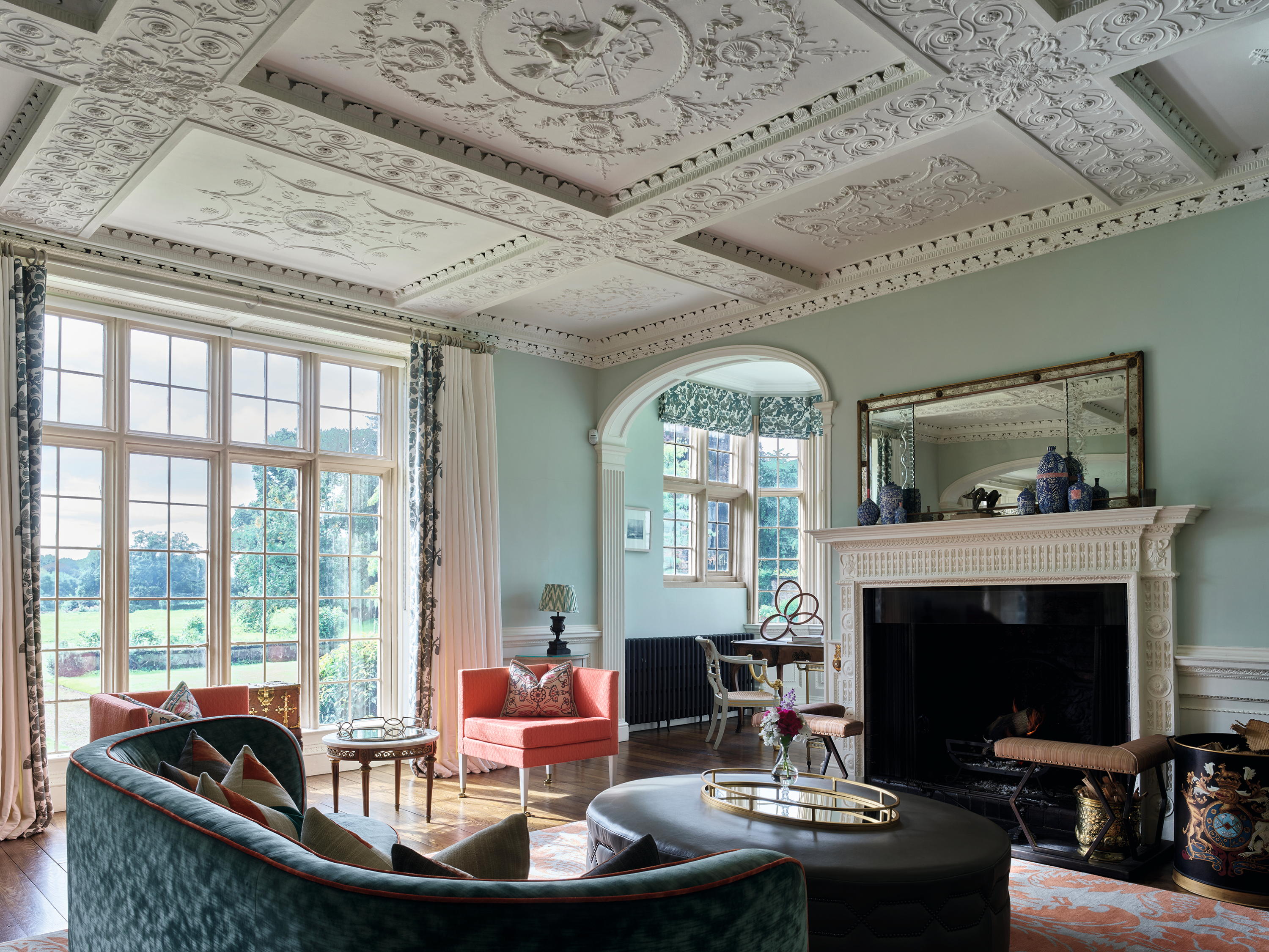 War, ruin and renaissance: Dorfold Hall's 400-year journey through the ages
War, ruin and renaissance: Dorfold Hall's 400-year journey through the agesJohn Goodall describes the antiquarian rediscovery of Dorfold Hall, Cheshire — home of Charles and Dr Candice Roundell — and the recent spectacular renewal of this important Jacobean house. Photographs by Paul Highnam for the Country Life Photo Library.
-
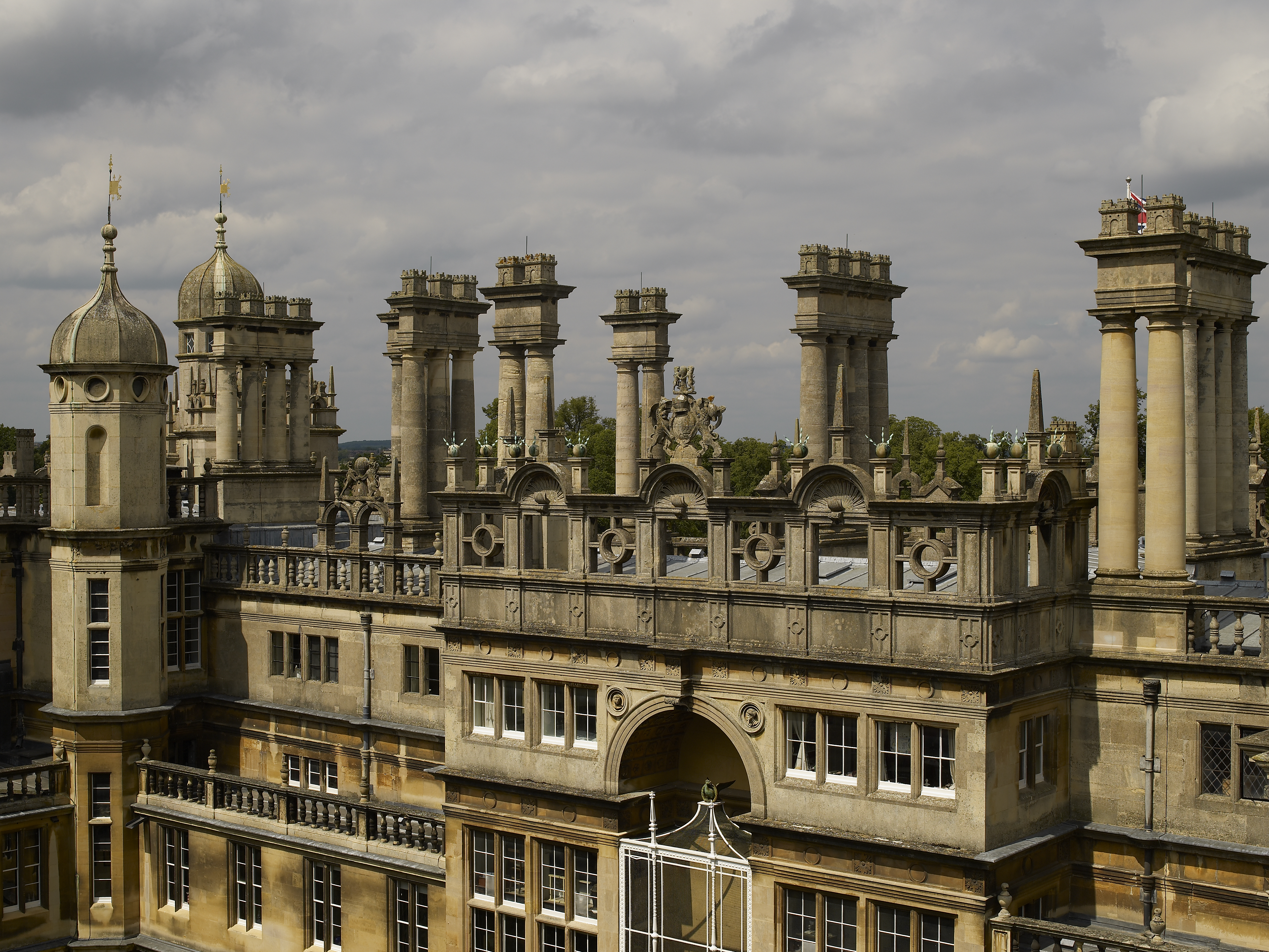 All fired up: 12 of our favourite chimneys, from grand architectural statements to modest brick stacks, as seen in Country Life
All fired up: 12 of our favourite chimneys, from grand architectural statements to modest brick stacks, as seen in Country LifeNothing says winter like a roaring fire, and plenty of the houses that we've photographed for the magazine's architectural places have fireplaces and chimneys worth boasting about.
-
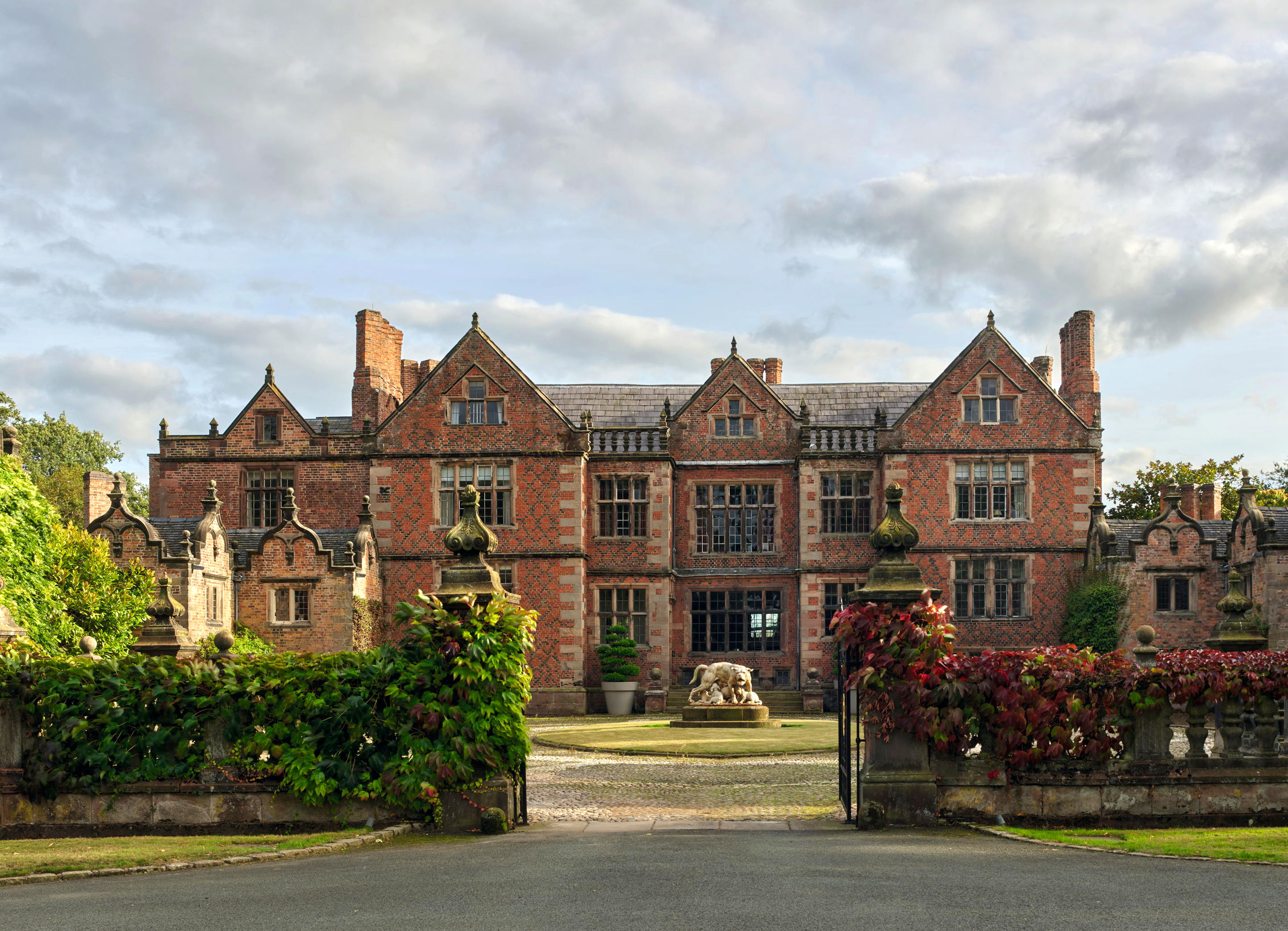 Dorfold Hall: The 'most neat and beautiful house of brick' that owes its existence to a desperate effort to secure succession
Dorfold Hall: The 'most neat and beautiful house of brick' that owes its existence to a desperate effort to secure successionDorfold Hall in Cheshire is an outstanding Jacobean house, but was an unexpected product of dynastic disappointment. John Goodall examines the remarkable circumstances of its construction; photographs by Paul Highnam for Country Life.